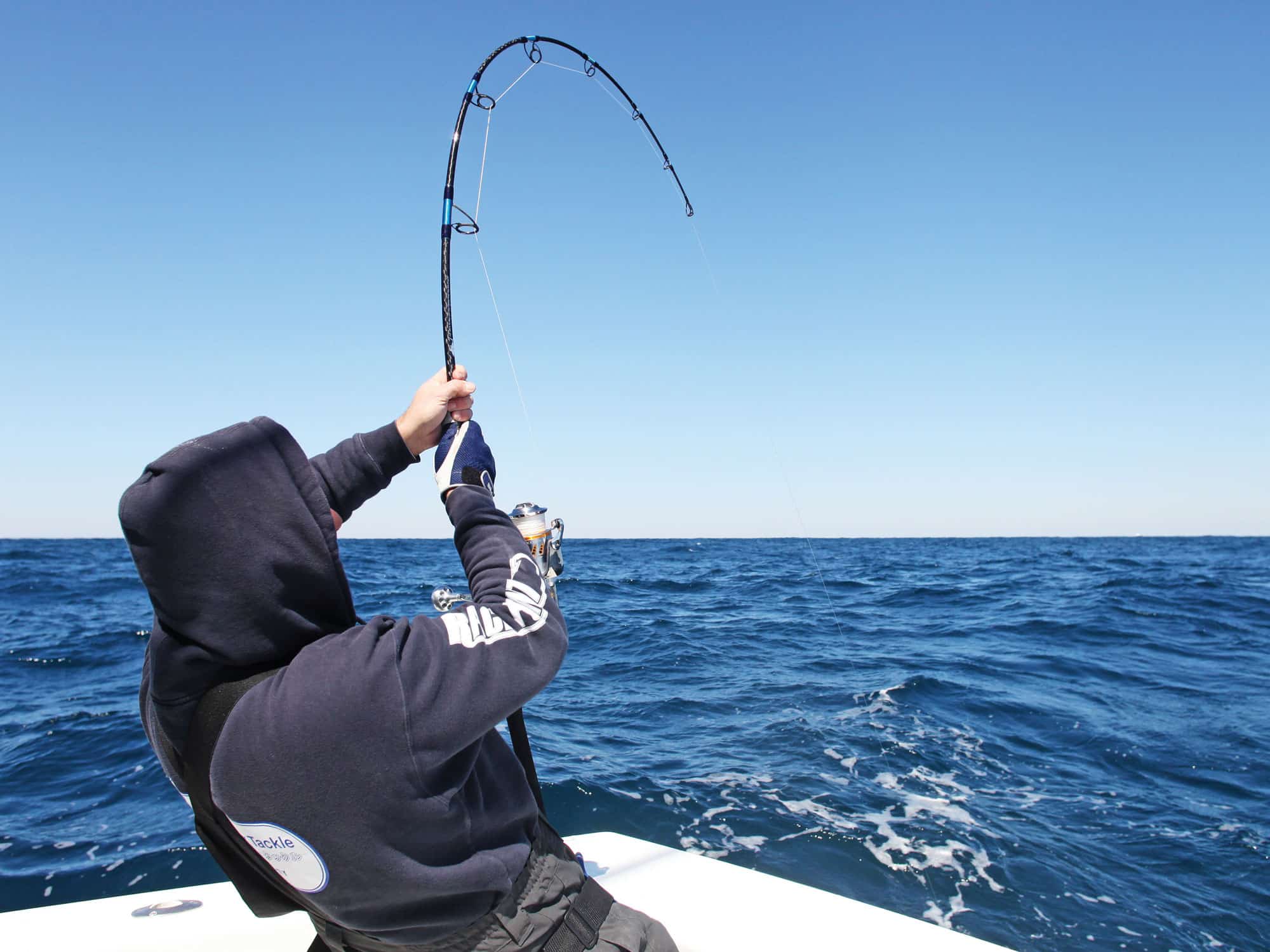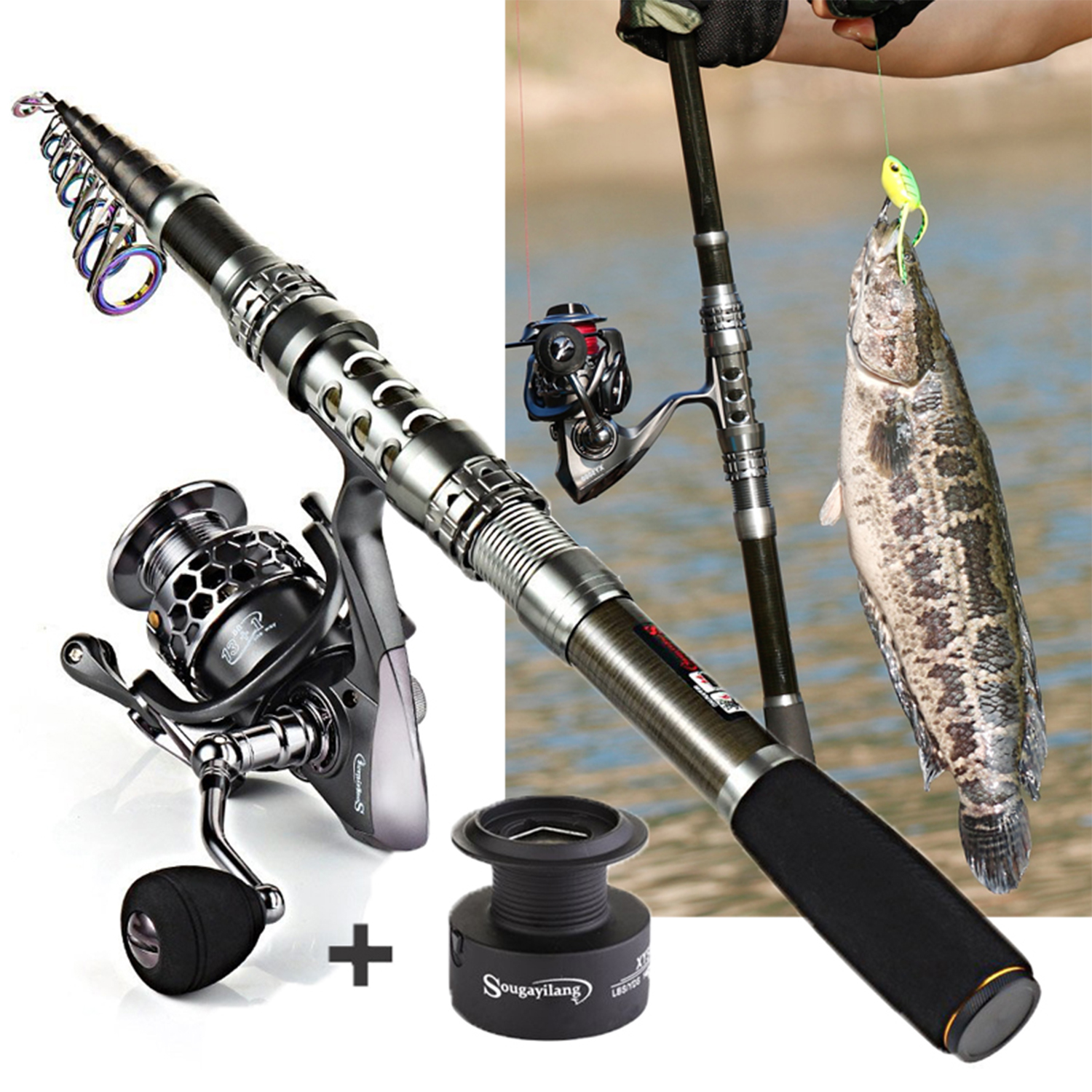The vast, untamed expanse of the saltwater realm is a true haven for the passionate angler. Whether you’re targeting feisty inshore species or pursuing the elusive pelagic giants of the deep, success on the saltwater frontier is largely dependent on the tool in your hands – the salt water fishing rod. This specialized piece of equipment is the conduit between you and the fish, and choosing the right saltwater fishing rod can make all the difference in unlocking the secrets of the briny deep.
The Importance of the Salt water Fishing Rod
The saltwater fishing rod is more than just a simple tool; it’s a carefully engineered extension of the angler’s skill and technique. This specialized piece of equipment must be capable of withstanding the immense power and unpredictable movements of saltwater gamefish, while also providing the necessary sensitivity and control to detect the slightest of bites and execute precise presentations.

Harnessing the Power of Saltwater Species
Saltwater species, from the acrobatic marlin to the hard-charging redfish, possess a level of raw strength and explosive power that can quickly overwhelm an ill-suited fishing rod. Choosing the right rod power, action, and length is crucial in order to tame these formidable opponents and bring them to the boat or shore.
A rod that is too light or too flexible can easily be outmatched by the sheer brute force of a large saltwater fish, leading to heartbreaking line breaks or straightened hooks. Conversely, a rod that is too stiff and unyielding can compromise the angler’s ability to detect subtle bites, set the hook effectively, and absorb the shock of hard-charging runs.
By carefully selecting the appropriate rod specifications for the target species and fishing conditions, anglers can harness the power of saltwater fish and gain a decisive advantage in the battle.

Ensuring Sensitive and Precise Presentations
While raw power and strength are essential for conquering the giants of the saltwater realm, the most successful anglers also recognize the importance of sensitivity and precision in their fishing rods. Inshore species, such as speckled trout and bonefish, often require delicate presentations and the ability to detect the gentlest of strikes.
A well-crafted saltwater fishing rod, with the right balance of power and responsiveness, allows anglers to execute pinpoint casts, detect the slightest of nibbles, and set the hook with surgical precision. This level of control and sensitivity is particularly crucial when targeting wary, sight-feeding species or when employing specialized techniques like sight-fishing or fly-fishing.
By choosing a saltwater rod that strikes the perfect balance between power and finesse, anglers can elevate their game and consistently outwit the cunning inhabitants of the briny deep.
Selecting the Ideal Salt water Fishing Rod
Navigating the vast array of saltwater fishing rod options can be a daunting task, but by understanding the key specifications and how they relate to your fishing goals, you can make an informed decision that will pay dividends on the water.

Rod Power and Action
The power and action of a saltwater fishing rod are the primary factors that determine its ability to handle the strength and fighting characteristics of the target species. Rod power, ranging from ultra-light to heavy, refers to the rod’s capacity to withstand the pressure and leverage exerted by a fish.
For targeting powerful open-water species, such as tuna and billfish, a heavy or extra-heavy power rod is essential to subdue their relentless runs and aerial acrobatics. Conversely, light or moderate power rods are better suited for inshore gamefish, where a more delicate touch and enhanced sensitivity are required.
The action of a rod, which describes its degree of flexibility or “bend,” is equally important. Fast-action rods, with their stiffer backbones, excel at driving home the hook and providing the necessary leverage to turn the heads of hard-fighting fish. Slow-action rods, with their increased flexibility, are better equipped to absorb the powerful surges of big saltwater species while still allowing for precise presentations.
By carefully considering the power and action requirements of your target species and fishing scenarios, you can select a saltwater rod that offers the optimal balance of strength, sensitivity, and control.

Rod Length and Casting Capabilities
The length of a saltwater fishing rod can have a significant impact on its casting performance, its ability to control the line during the fight, and the overall fishing experience.
Longer rods, typically in the 7- to 8-foot range, excel at generating increased casting distance and line control, making them well-suited for open-water scenarios and targeting pelagic species. These rods provide the necessary leverage to execute long casts and manage the powerful runs of big fish, but can be less maneuverable in confined spaces.
Shorter rods, in the 6- to 7-foot range, are often preferred for inshore and nearshore applications, where pinpoint accuracy and close-quarters maneuverability are paramount. These rods allow for more precise presentations, improved hook-setting power, and enhanced control when fishing around structure and cover.
By understanding the specific casting and control requirements of your fishing environment and target species, you can select a saltwater rod length that will maximize your effectiveness and enjoyment on the water.
Reel Seat and Guides
While the power, action, and length of a saltwater fishing rod are the primary considerations, the reel seat and guide configuration also play a crucial role in the overall performance and functionality of the setup.
The reel seat, the component that secures the reel to the rod, must be sturdy and corrosion-resistant to withstand the rigors of the saltwater environment. Some reel seats are designed with additional features, such as gimbal lugs or fighting butts, to provide enhanced comfort and leverage during the fight.
The guide configuration, including the number, size, and placement of the guides, can significantly impact the rod’s casting efficiency, line control, and overall balance. Larger, more evenly spaced guides are often preferred for open-water applications, while smaller, closer-set guides can improve accuracy and presentation when fishing inshore.
By ensuring that the reel seat and guide configuration of your saltwater fishing rod are optimized for your specific needs, you can create a cohesive and high-performing setup that will serve you well in the pursuit of your saltwater quarry.

Maintaining and Caring for Your Salt water Fishing Rod
Investing in a quality saltwater fishing rod is just the first step; properly maintaining and caring for your valuable equipment is essential to ensure its long-term performance and reliability.
Cleaning and Rinsing
Saltwater is inherently corrosive, and the exposure of your fishing rod to this environment can lead to the rapid deterioration of its components. Regularly rinsing your rod with fresh, clean water after each use is crucial to remove any saltwater, sand, or grime that may have accumulated.
For a thorough cleaning, you can use a mild soap solution and a soft cloth or sponge to gently wipe down the rod blank, reel seat, and guides. Avoid using abrasive materials or harsh chemicals, as these can damage the rod’s finish and delicate components.
Lubricating and Protecting
To further safeguard your saltwater fishing rod, apply a light coat of corrosion-inhibiting lubricant or protectant to the reel seat, guides, and any exposed metal components. These specialized products help to create a barrier against the corrosive effects of saltwater, prolonging the lifespan of your gear.
When storing your rod, be sure to keep it in a cool, dry place, away from direct sunlight and extreme temperatures. Proper storage, such as in a rod sleeve or case, can also help to prevent any physical damage or warping to the blank.
Inspecting and Maintaining
Regularly inspect your saltwater fishing rod for any signs of wear, damage, or performance degradation. Check the guides for cracks or sharp edges that could potentially fray your line, and ensure that the reel seat is securely tightened and free of any play or looseness.
If you encounter any issues, such as a bent guide or a cracked blank, it’s important to have the rod professionally repaired or replaced. Attempting DIY repairs on a saltwater rod can often lead to further damage and compromise the rod’s integrity.
By dedicating time and attention to the proper maintenance and care of your saltwater fishing rod, you can ensure that it continues to perform at its best, withstanding the harsh conditions of the briny deep and delivering a lifetime of reliable and rewarding fishing experiences.
Elevating Your Salt water Fishing with the Right Rod
The saltwater fishing rod is the unsung hero of the angler’s arsenal, a specialized tool that can mean the difference between a successful day on the water and a heartbreaking defeat. By understanding the critical role that this equipment plays in the pursuit of saltwater species, and by selecting the right rod for the job, you can unlock a new level of mastery and confidence in your saltwater fishing endeavors.


















